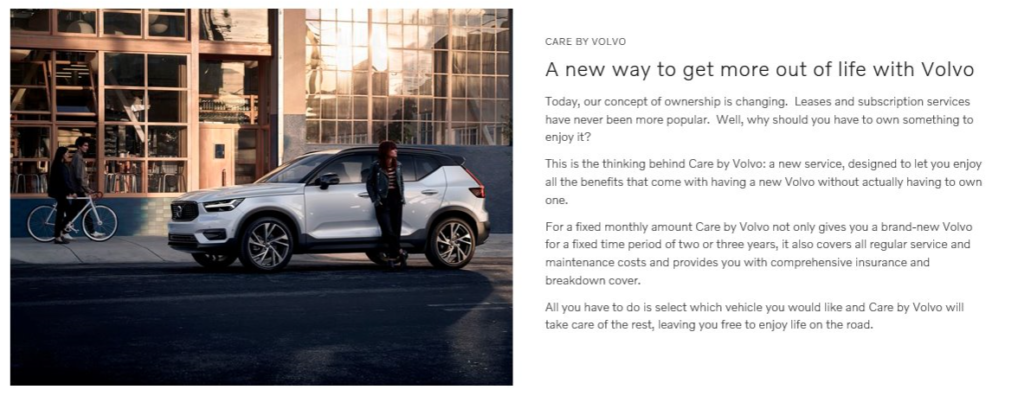You may have noticed a surge in companies that are now adopting subscription billing models. There’s all types of businesses offering all types of subscriptions. You may be familiar with the likes of Dollar Shave Club and Hello Fresh but even companies like Volvo have adopted a subscription billing model too.
Volvo now make their cars available on a subscription model where consumers will pay one fixed fee per month for access to a car which includes insurance and maintenance.
Everything from toothbrushes to flowers are now available with subscription billing. Maybe you’ve subscribed to some yourself and have an understanding of this type of business model. But have you thought about adopting a subscription model for your own business?
Future Value Comes From Recurring Revenue
When it comes to the value of your business, what happened in the past is much less important than what is likely to happen in the future.
One of the most important ways you can shape the future of your business is to create some recurring revenue. Recurring revenue comes from those magical sales you make without really trying. Good examples of recurring revenue models include ongoing service contracts, subscriptions and memberships – basically any sale situation the customer has to proactively opt out of, instead of in to.
Andrew Park, MD of Swan Energy deliberately structured his business to be fully based on recurring revenue. He based his thinking after reading the book Built to Sell: Creating a Business that can Thrive without you, written by John Warrillow, the founder of the Value Builder System. Andrew says his focus on recurring revenue fits the following 6 reasons:
6 Reasons To Consider A Subscription Model
Could you offer some sort of recurring plan to your customers? Here are six reasons to consider offering your customers a subscription:
1. Predictability: When you have subscribers, you can plan what your business needs in the future. For example, the average flower shop throws out more than half of its stock each month because it’s too rotten to sell. At H.Bloom, a subscription-based flower company that sells flowers to hotel and spas, they throw out less than 2% of their flowers because they can perfectly predict how many flowers are needed to fulfill their orders.
2. Eliminate Seasonality: Many businesses suffer through seasonal highs and lows. In fact, a whopping thirty percent of a typical flower shop’s sales comes on Mother’s Day and Valentine’s Day – ultimately leaving them to scramble to make a sale in November. By contrast, H.Bloom has a steady stream of subscribers that pay each month. One of my Wakefield-based clients services schools and gets paid each month, even when the school is closed.
3. Improved Valuation: Recurring revenue boosts the value of your business. Whereas most small companies trade on a multiple of profit, subscription-based businesses often trade on a similar multiple of revenue. Results from over 40,000 Value Builder Assessments show that increasing the proportion of recurring revenue drives up the sales multiple.
4. The Trojan Horse Effect: Once you subscribe to a service, you become much more likely to buy other things from the same company. That’s one reason Amazon is so keen to get you to buy subscriptions to things like Prime or Subscribe & Save. Amazon knows that once you become a subscriber, you are much more likely to buy additional products. According to TIME Magazine, more than 10 million people have signed up to Prime. If you do the maths, that makes Prime close to a billion-pound business for Amazon. And like most programmes, members pay upfront, giving Amazon a big injection of positive cash flow.
5. The Sale That Keeps On Giving: Unlike the transaction business model where you have to stimulate demand through advertising to get customers to buy, with a subscription-based model, you sell one subscription and it keeps on giving month after month. One of the reasons Amazon Prime is so profitable is that Prime subscribers buy more and are stickier than non-Prime subscribers. Prime subscribers want to get their money’s worth, so they buy a wider swath of products from Amazon and are less tempted by competitive offers.
6. Data & Market Research: When you get a customer to subscribe, you can start to see their spending and consumption habits. This data is the ultimate in market research. Finding out what your customers want is expensive. By the time you pay attendees, rent a room with a one-way mirror and buy the little sandwiches with the crusts cut off, a focus group can cost you upwards of £5,000. A statistically significant piece of quantitative research, done by a reputable polling company, might approach six figures. With a subscription company, you get instant market research for free. Netflix knows which shows to produce based on the viewing behaviour of its subscribers. No need to ask viewers what they like, Netflix can see what they watch and rate. For you, adopting a subscription model can allow you to test new ideas and gives you a direct relationship with your customers so you can see what they like first hand.
So the question is what kind of subscription model could you introduce into your business? Why not get your team involved in a brainstorming session which will not only make them feel valued but in-turn get their buy in.
Want To Know More About Adopting A Subscription Model?
If this sounds like something you’d like to look at for your business download the whitepaper The Automatic Customer: 9 Subscription Models Any Business Can Adopt. From this whitepaper business owners will learn how all kinds of companies are leveraging the predictable cash flow of a recurring revenue engine. It is based on The Automatic Customer: Creating A Subscription Business In Any Industry – ranked one of the Top 5 Business Books by Fortune Magazine.

